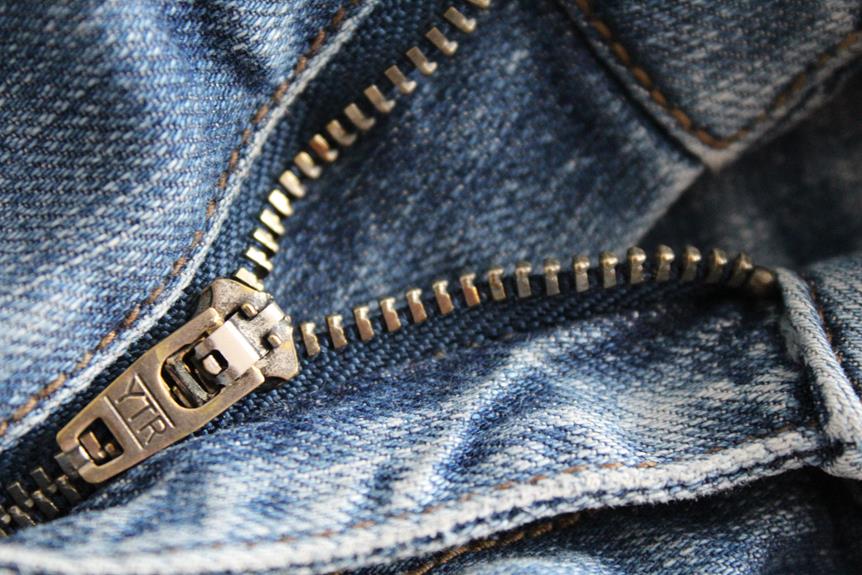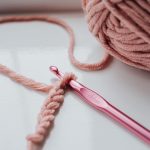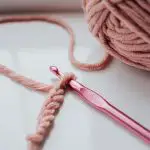Are locking sliders the ultimate fabric fastener?
Imagine securely fastening a heavy-duty outdoor tent in extreme weather conditions using locking sliders, ensuring maximum stability and longevity.
In this guide, we explore the evolution, advantages, and misconceptions surrounding locking sliders, comparing their durability and longevity with traditional fasteners, and discussing their compatibility with various fabric types.
Dive into the creative applications of locking sliders and gain insight into considerations for choosing the most suitable option for your fabric fastening needs.
Key Takeaways
- Locking sliders have evolved over time and now offer enhanced durability and security.
- Locking sliders are compatible with a wide range of fabrics, including thin and stretchy fabrics, heavy and durable materials, and delicate and sheer textiles.
- Locking sliders are versatile and suitable for various fabric applications.
- Locking sliders provide a secure and adjustable fastening method that evenly distributes tension across the fabric, reducing the risk of tears or damage.
The Evolution of Locking Sliders
As you delve into the evolution of locking sliders, you'll find that their design has significantly improved over time, enhancing their functionality and reliability.
Evolutionary advancements in locking sliders have had a substantial impact on the industry, driving innovation and setting new standards for performance.
The initial iterations of locking sliders were rudimentary, often prone to jamming and unintentional release. However, with technological progress and a deeper understanding of materials and mechanics, locking sliders have undergone a remarkable transformation.
The introduction of high-strength materials such as reinforced plastics and corrosion-resistant metals has bolstered the durability and longevity of locking sliders. Simultaneously, precision engineering has led to smoother operation and enhanced security, making them indispensable in various applications, from outdoor gear to high-performance sportswear.
These evolutionary advancements haven't only elevated the capabilities of locking sliders but have also influenced the industry by enabling the development of more reliable and functional products. As a result, locking sliders have become an integral component in ensuring the quality and longevity of fabric fastening solutions.
Advantages of Locking Sliders
One advantage of locking sliders is that they provide a secure and adjustable fastening solution for various fabric applications. This feature allows you to easily adjust the tension and fit of the fabric, ensuring a snug and secure hold.
Additionally, locking sliders offer enhanced durability, making them suitable for long-term use without the risk of breakage or malfunction. The design innovation behind locking sliders also contributes to their advantages, as they're engineered to withstand frequent use and diverse environmental conditions.
Advantages of Locking Sliders:
- Secure Fastening: Locking sliders offer a secure and reliable fastening mechanism, ensuring that your fabric stays in place without the risk of slippage.
- Customizable Options: These sliders allow for easy adjustments, providing a customizable fit for different fabric applications.
- Enhanced Durability: The robust construction of locking sliders enhances their durability, making them suitable for long-term use without compromising on performance.
- Design Innovation: Locking sliders are designed with innovative features that contribute to their efficient and reliable functionality.
Types of Fabrics Compatible With Locking Sliders
You may be wondering which types of fabrics are best suited for locking sliders.
Thin and stretchy fabrics, such as spandex and jersey, work well with locking sliders due to their flexibility.
On the other hand, heavy and durable materials like denim and canvas also provide a secure hold.
Additionally, delicate and sheer textiles, such as silk and chiffon, can be effectively fastened with locking sliders, making them versatile for a variety of fabric types.
Thin and Stretchy Fabrics
When working with thin and stretchy fabrics, it's essential to choose a locking slider that can securely hold the material in place without causing damage. These types of fabrics require a delicate approach to ensure a professional finish without compromising the material.
Here are some types of thin and stretchy fabrics compatible with locking sliders:
- Jersey Knit: A common choice for lightweight and stretchy garments.
- Spandex: Requires a locking slider that can accommodate its high stretch factor.
- Silk Charmeuse: A delicate fabric that needs a gentle touch when using locking sliders.
- Modal: Known for its softness and stretch, making it vital to select the right slider for a secure hold without causing pulls or tears.
Careful consideration of fabric compatibility and precise sewing techniques is crucial when working with these materials.
Heavy and Durable Materials
Choose a heavy denim or sturdy canvas for projects requiring locking sliders, as these materials provide excellent compatibility and durability with this fastening method.
Heavy-duty fabrics such as denim and canvas are ideal for applications that demand industrial strength and resilience. These materials are designed to withstand the rigors of daily use, making them suitable for items like heavy-duty bags, outdoor gear, and workwear.
Denim, known for its durability and ruggedness, is a popular choice for garments and accessories that require a tough, long-lasting fabric.
Canvas, on the other hand, offers exceptional sturdiness and is often used in creating heavy-duty products such as tents, tote bags, and upholstery.
When using locking sliders, opting for heavy and durable materials ensures that your projects will stand the test of time.
Delicate and Sheer Textiles
While working on projects involving delicate and sheer textiles, it's important to select fabrics that are compatible with locking sliders for optimal fastening. Delicate and sheer textiles such as silk and intricate lace designs require special care to preserve their beauty and integrity when using locking sliders.
Here are some types of fabrics compatible with locking sliders:
- Silk Charmeuse: This smooth, lightweight fabric drapes beautifully and is ideal for elegant garments that require locking sliders for closures.
- Chiffon: A delicate, sheer fabric that works well with locking sliders, especially for creating ethereal and flowy designs.
- Organza: This crisp and sheer fabric is perfect for locking sliders, adding a touch of elegance and structure to garments.
- Fine Lace: Intricate lace designs can be effectively fastened with locking sliders, providing a secure closure without compromising the delicate nature of the fabric.
When working with delicate and sheer textiles, selecting the right fabric compatible with locking sliders is crucial for achieving both functionality and aesthetic appeal.
Common Misconceptions About Locking Sliders
Dispelling misconceptions about locking sliders is essential for understanding their true effectiveness as fabric fasteners.
One common misconception is that locking sliders are difficult to use. In reality, these fasteners are designed for ease of use, providing a simple and secure way to fasten fabrics without the need for complex techniques.
Another misconception is that locking sliders aren't suitable for heavy fabrics. However, locking sliders are versatile and can effectively secure a wide range of fabric weights, making them a practical choice for various sewing projects.
Additionally, some may believe that locking sliders aren't durable enough to withstand frequent use. Contrary to this belief, high-quality locking sliders are built to be durable and long-lasting, offering reliable fastening for the long term.
Understanding these misconceptions is crucial for appreciating the benefits of locking sliders as fabric fasteners. By debunking these myths, you can make informed decisions about incorporating locking sliders into your sewing projects.
With their user-friendly design, versatility, and durability, locking sliders prove to be an effective and practical choice for fastening fabrics.
Durability and Longevity of Locking Sliders
When considering the durability and longevity of locking sliders, it's important to recognize their resilience and reliability in securing fabrics over time. Locking sliders undergo rigorous durability testing to ensure they meet industry standards, making them a dependable choice for long-term use.
Here are key factors to consider:
- Material Strength: Locking sliders are often made from robust materials such as metal or high-quality plastic, providing exceptional strength and resistance to wear and tear.
- Corrosion Resistance: Many locking sliders are designed to withstand exposure to moisture and environmental elements, reducing the risk of corrosion and maintaining their functionality over time.
- Smooth Operation: Through extensive testing, locking sliders are engineered to maintain smooth and consistent functionality, ensuring they continue to operate effectively even after prolonged use.
- Endurance: Locking sliders are built to withstand repetitive movements and tension, demonstrating a high level of endurance that contributes to their long-term reliability.
Locking Sliders Vs. Traditional Fasteners
Consider the advantages of locking sliders over traditional fasteners for securing fabrics.
When comparing locking sliders to traditional fasteners, it becomes evident that locking sliders offer several advantages.
Traditional fasteners, such as buttons, snaps, and hooks, often come with drawbacks. Buttons can be time-consuming to fasten and unfasten, and they may become loose over time, leading to potential fabric damage. Snaps can easily pop open, especially when under tension, and hooks can be cumbersome to secure and may cause snags in delicate fabrics.
On the other hand, locking sliders provide a secure and adjustable fastening method that's quick and easy to use. They evenly distribute tension across the fabric, reducing the risk of tears or damage. Additionally, locking sliders are versatile and can be used on a variety of fabric types, from heavy-duty materials to lightweight fabrics.
When considering the drawbacks of traditional fasteners and the benefits of locking sliders, it becomes clear that locking sliders offer a superior option for securing fabrics.
Creative Applications of Locking Sliders
Locking sliders offer a versatile and customizable way to fasten fabrics, providing a secure hold with innovative design possibilities.
Whether you're looking to create adjustable straps, removable closures, or unique garment accents, locking sliders give you the flexibility to bring your creative ideas to life.
Their ease of use and reliability make them a practical choice for a wide range of fabric fastening applications.
Versatility in Fastening
With locking sliders, you can effortlessly fasten fabric in a multitude of creative applications, enhancing both functionality and aesthetics. Locking sliders offer versatility in fastening, allowing you to explore innovative ways to secure fabric.
Here are some creative applications of locking sliders:
- Adjustable Straps: Use locking sliders to create adjustable straps on bags, backpacks, or clothing, providing a customizable fit.
- Decorative Accents: Incorporate locking sliders into fabric art and crafts to add visual interest and texture.
- Convertible Garments: Utilize locking sliders to transform clothing items into versatile, convertible pieces, such as adjustable hemlines or convertible sleeves.
- Functional Closures: Create functional closures on fabric items like curtains, pillow covers, or pouches, allowing for easy opening and closing.
Customizable and Secure
You can easily customize and secure fabric using locking sliders for a variety of creative applications.
Customization options with locking sliders allow you to tailor the fit of garments, bags, or outdoor gear to your specific needs. Whether it's adjusting the waistband of a pair of pants or creating an adjustable strap on a backpack, locking sliders offer flexibility in design.
Additionally, locking sliders provide enhanced security, ensuring that your fabric stays in place without unwanted movement. This feature is especially useful in outdoor gear and accessories where reliable closure is crucial for the safety and functionality of the product.
Innovative Design Possibilities
Incorporate locking sliders into your designs for a range of creative applications, such as adjustable closures on clothing and customizable straps for bags and gear.
The innovative design possibilities offered by locking sliders are endless, allowing you to explore unique applications and push the boundaries of conventional design.
Consider the creative potential of locking sliders to develop custom solutions and explore unconventional uses in your projects.
Here are some innovative design possibilities for locking sliders:
- Adjustable closures on outerwear and activewear
- Customizable straps for backpacks and messenger bags
- Modular attachments for outdoor gear and equipment
- Innovative closures for technical apparel and accessories
Unlock the full creative potential of locking sliders and elevate your designs with custom solutions and unconventional uses.
Considerations for Choosing Locking Sliders
When choosing locking sliders, consider factors such as durability, ease of use, and compatibility with your fabric.
Start by choosing the right size for your project. The size of the zipper teeth should match the weight and thickness of the fabric. For heavy-duty fabrics, opt for larger teeth and sliders.
Material compatibility is crucial. Ensure that the slider and fabric materials are compatible to prevent corrosion or damage over time.
Durability is essential for long-term use. Look for sliders made from high-quality materials like metal or strong plastics.
Smooth operation and ease of use are also key considerations. Test the sliders to ensure they move freely without sticking or catching on the fabric. Additionally, examine the slider's locking mechanism to ensure it securely fastens the fabric.
Prioritize sliders with a reliable locking feature for added security.
Frequently Asked Questions
Can Locking Sliders Be Used on Non-Fabric Materials, Such as Leather or Vinyl?
Locking sliders can be used on non-fabric materials like leather. They offer a secure fastening option for leather applications. However, for vinyl alternatives, consider other fastening methods, as locking sliders may not be as effective.
Are There Any Environmental Concerns or Sustainability Issues Related to the Production and Use of Locking Sliders?
When considering locking sliders, you should be aware of the environmental impact and production sustainability. It's important to assess the materials used and the manufacturing processes to ensure minimal negative effects on the environment.
What Are Some Unique or Unconventional Ways That Locking Sliders Can Be Utilized Beyond Traditional Garment Fastening?
Looking for creative applications for locking sliders? Consider using them in upcycling projects like creating adjustable straps for bags, or making customized lanyards. Locking sliders offer versatility beyond traditional garment fastening.
Are There Any Specific Care and Maintenance Instructions for Ensuring the Longevity and Performance of Locking Sliders?
To ensure locking sliders last, follow care instructions. Keep them clean and dry, avoid harsh chemicals, and store them away from direct sunlight and extreme temperatures. Regular maintenance and gentle handling will prolong their longevity.
How Do Locking Sliders Compare in Cost to Traditional Fasteners, and Are There Any Cost-Saving Benefits to Using Them?
Locking sliders offer cost savings compared to traditional fasteners, with durable benefits. They provide a long-term solution, reducing the need for frequent replacements. The initial investment in locking sliders can result in lower maintenance and replacement expenses over time.
- Can You Get Organza Wet? - April 23, 2024
- Why Is Organza so Popular? - April 23, 2024
- What Do You Wear With Organza? - April 23, 2024








